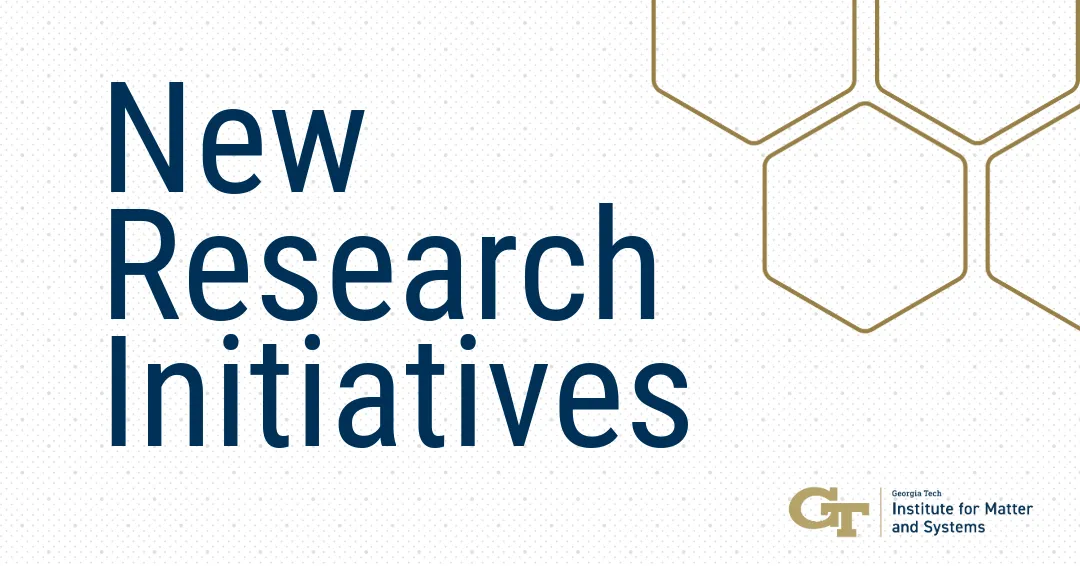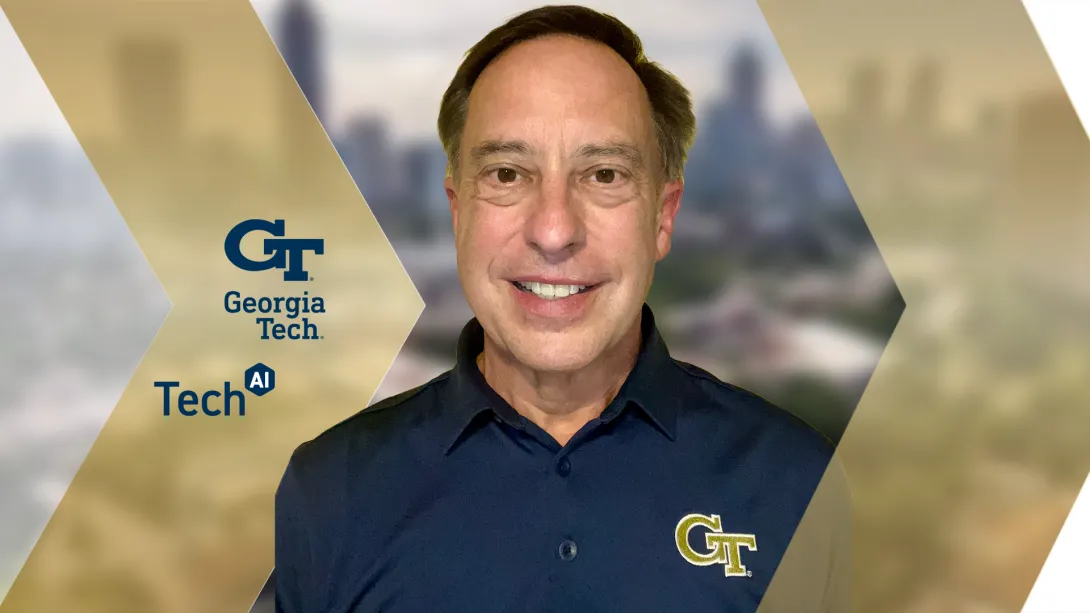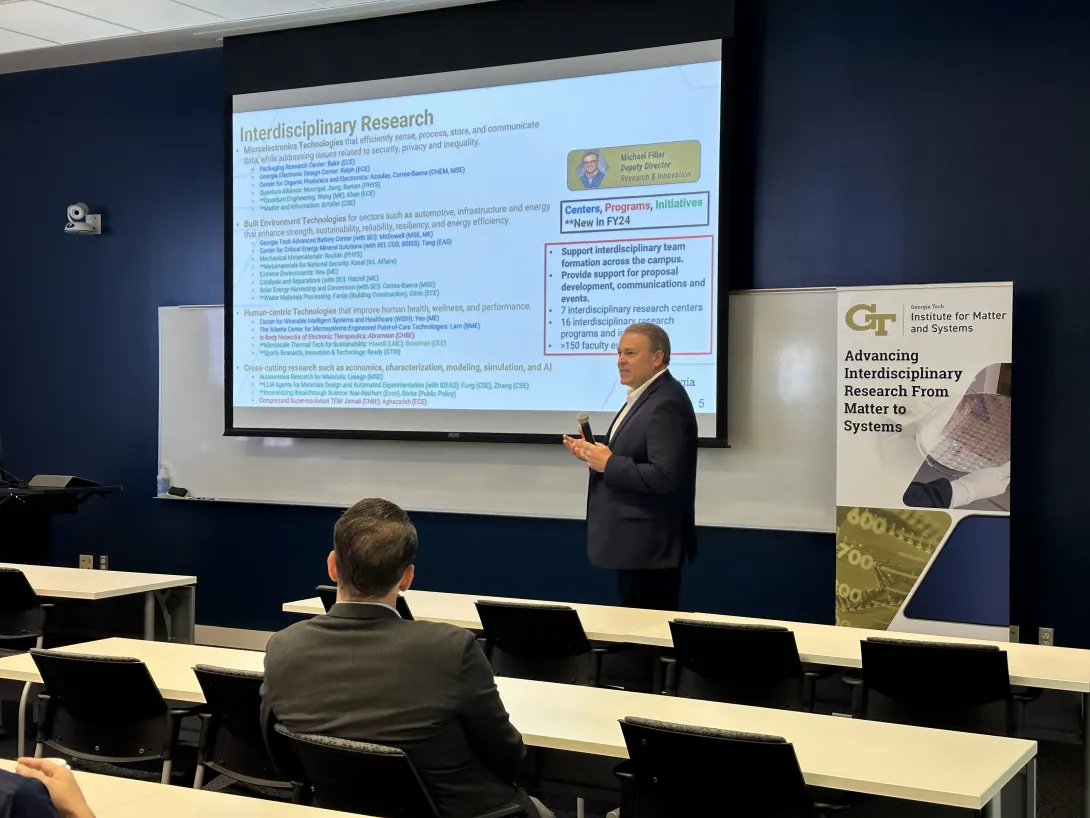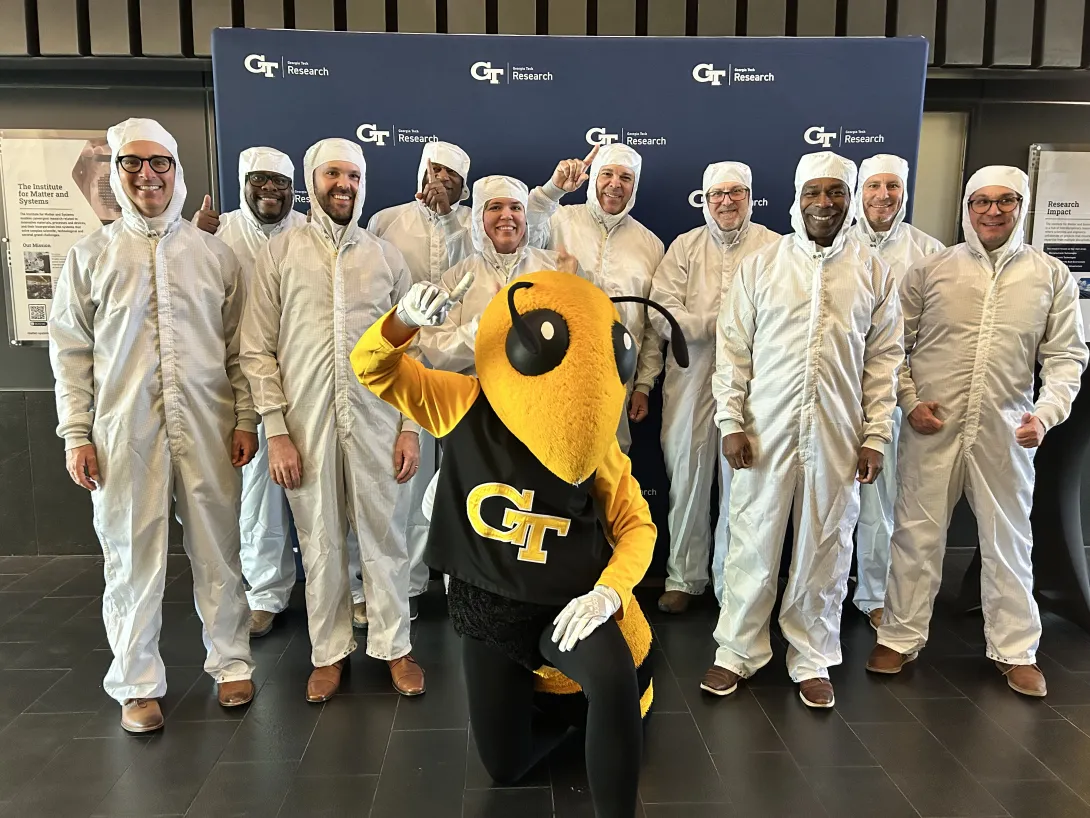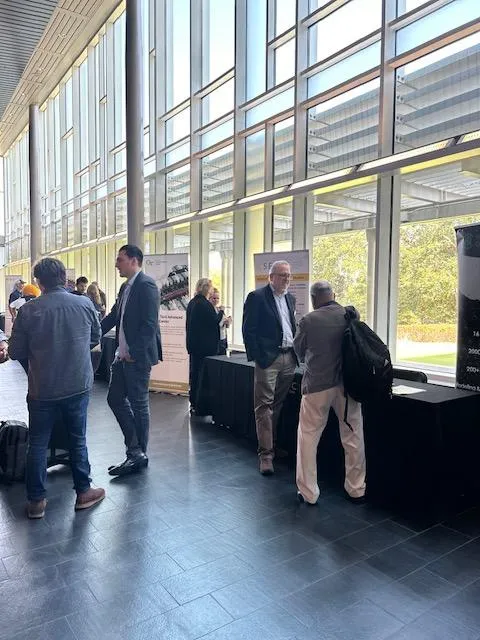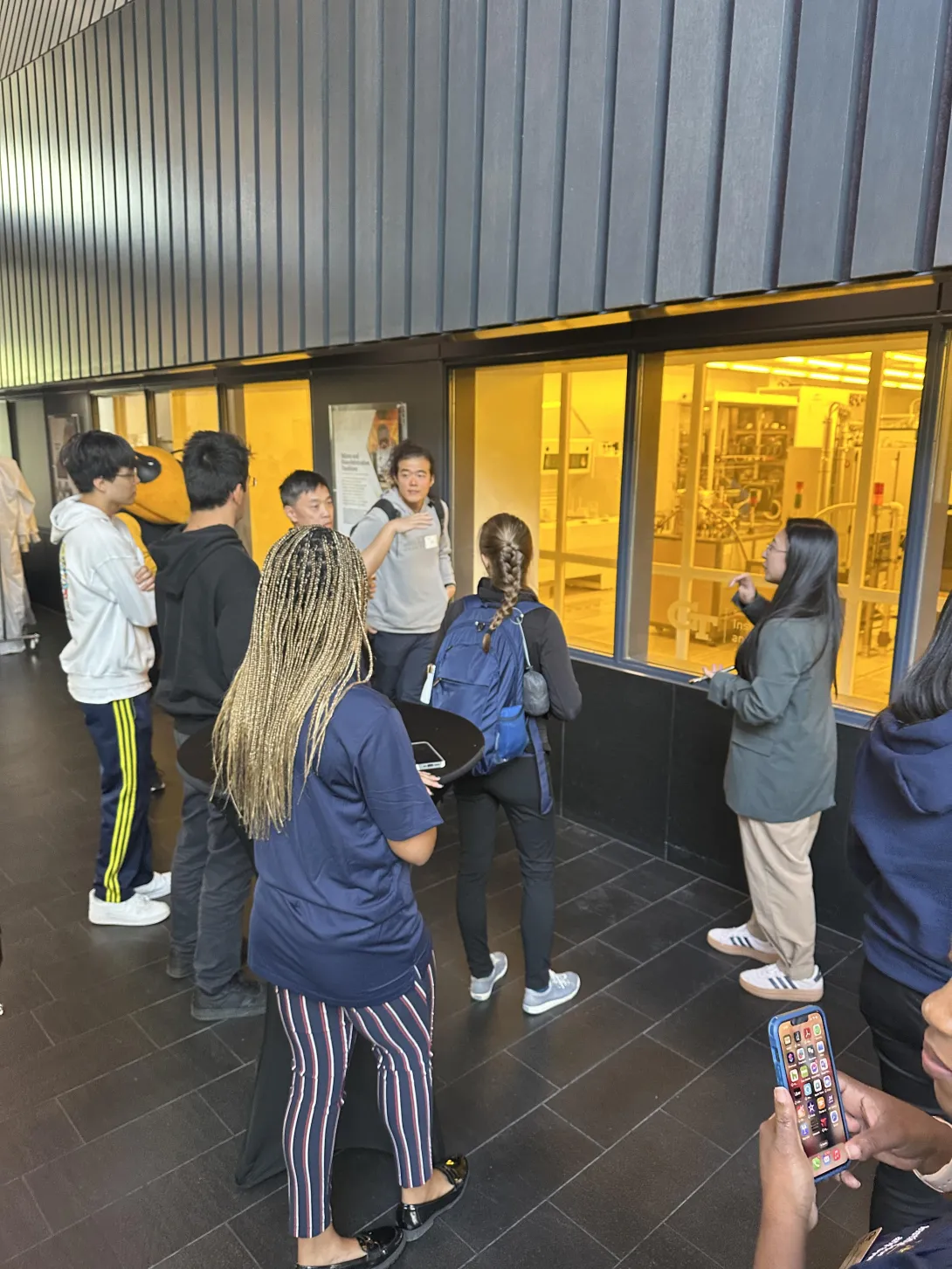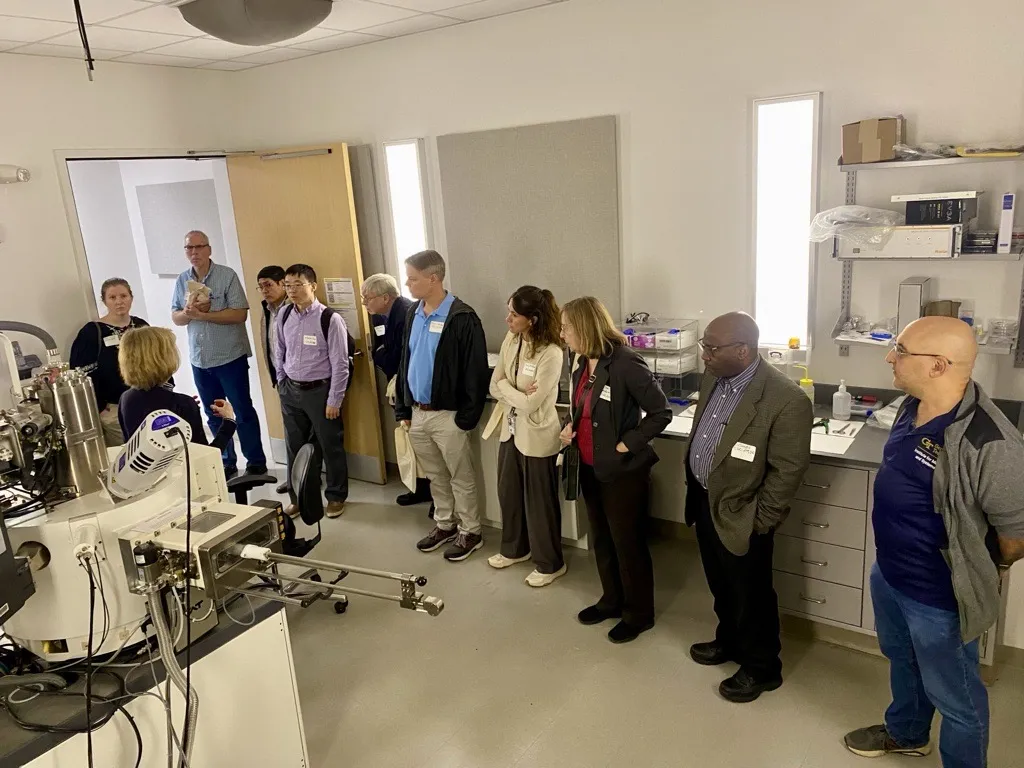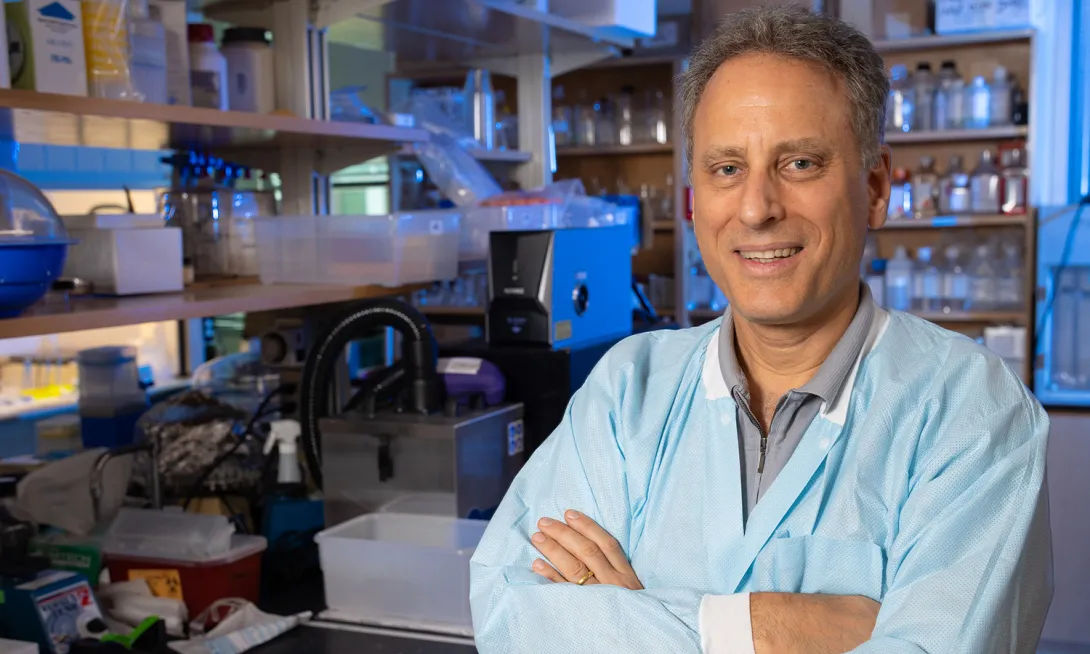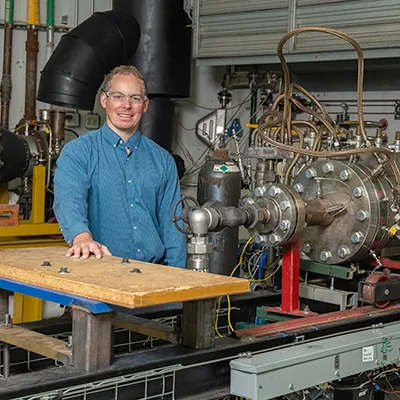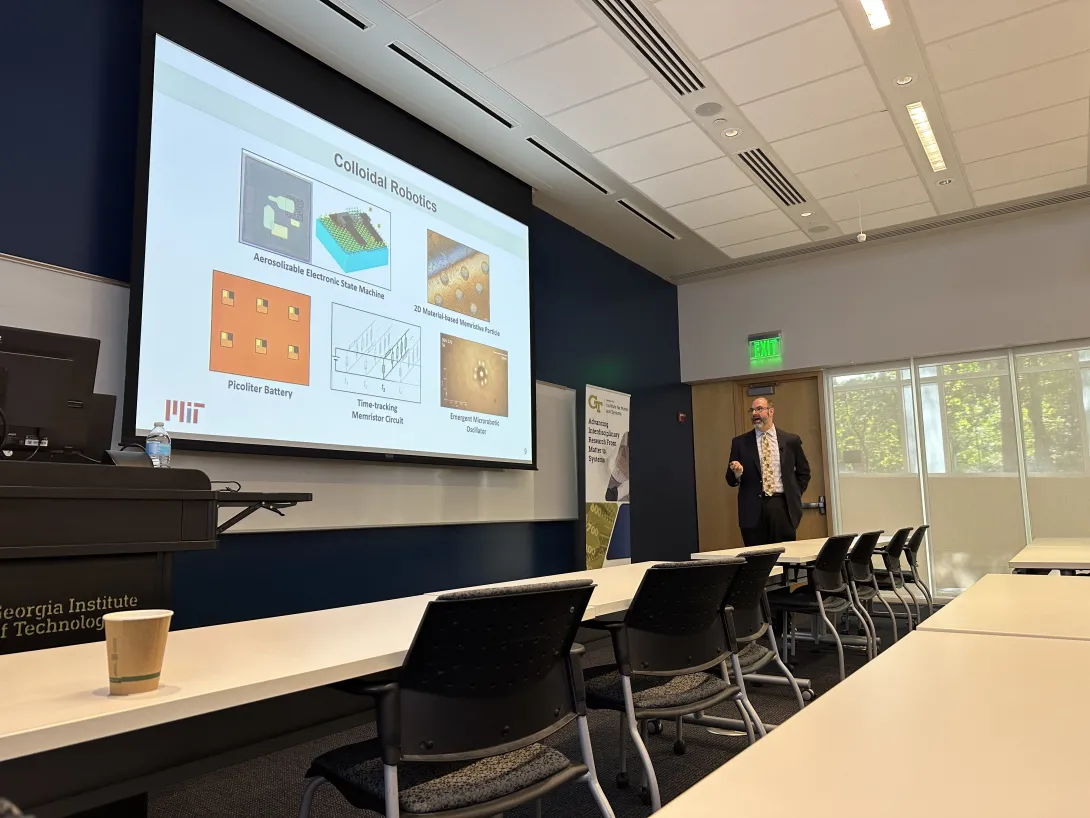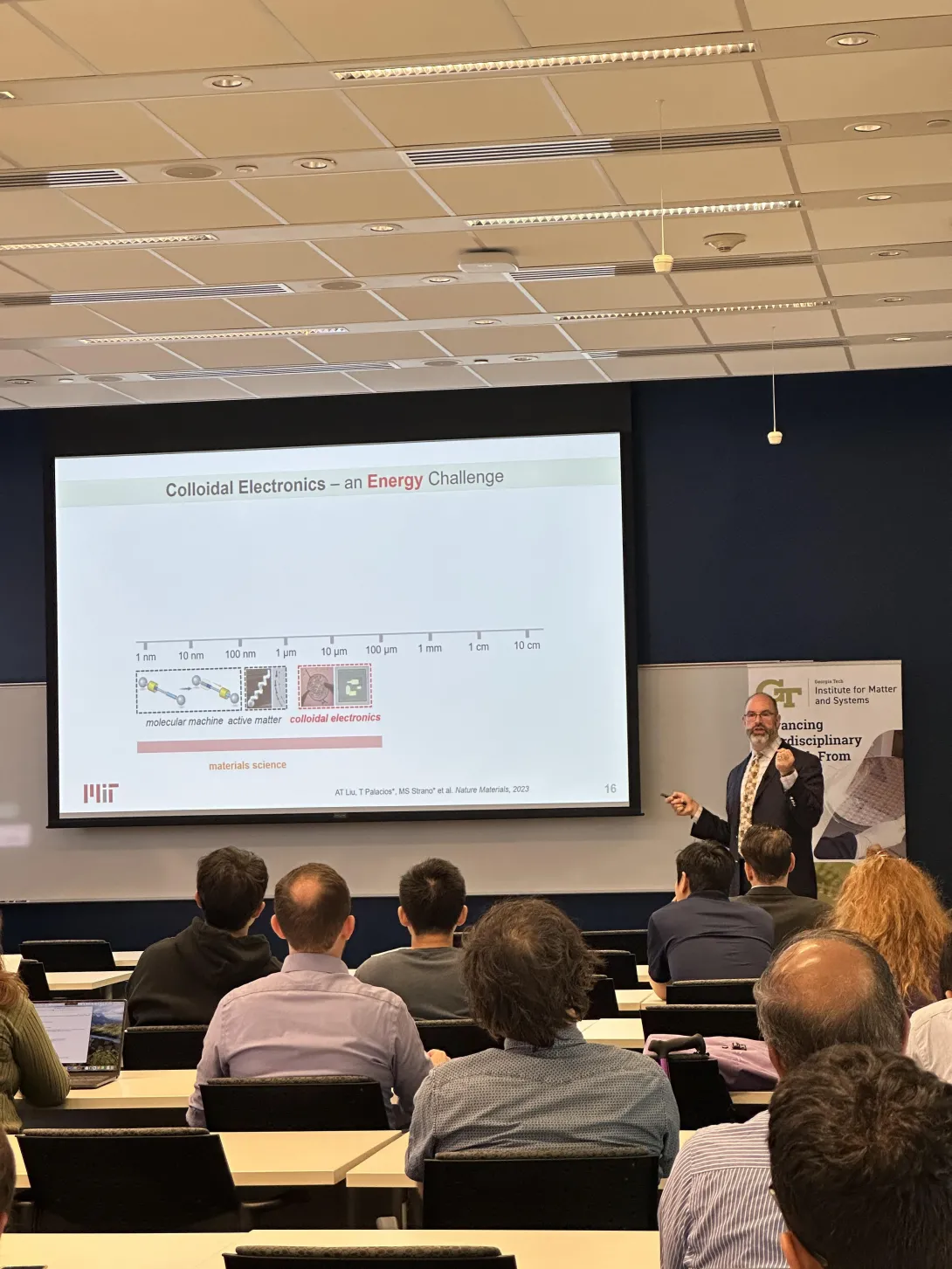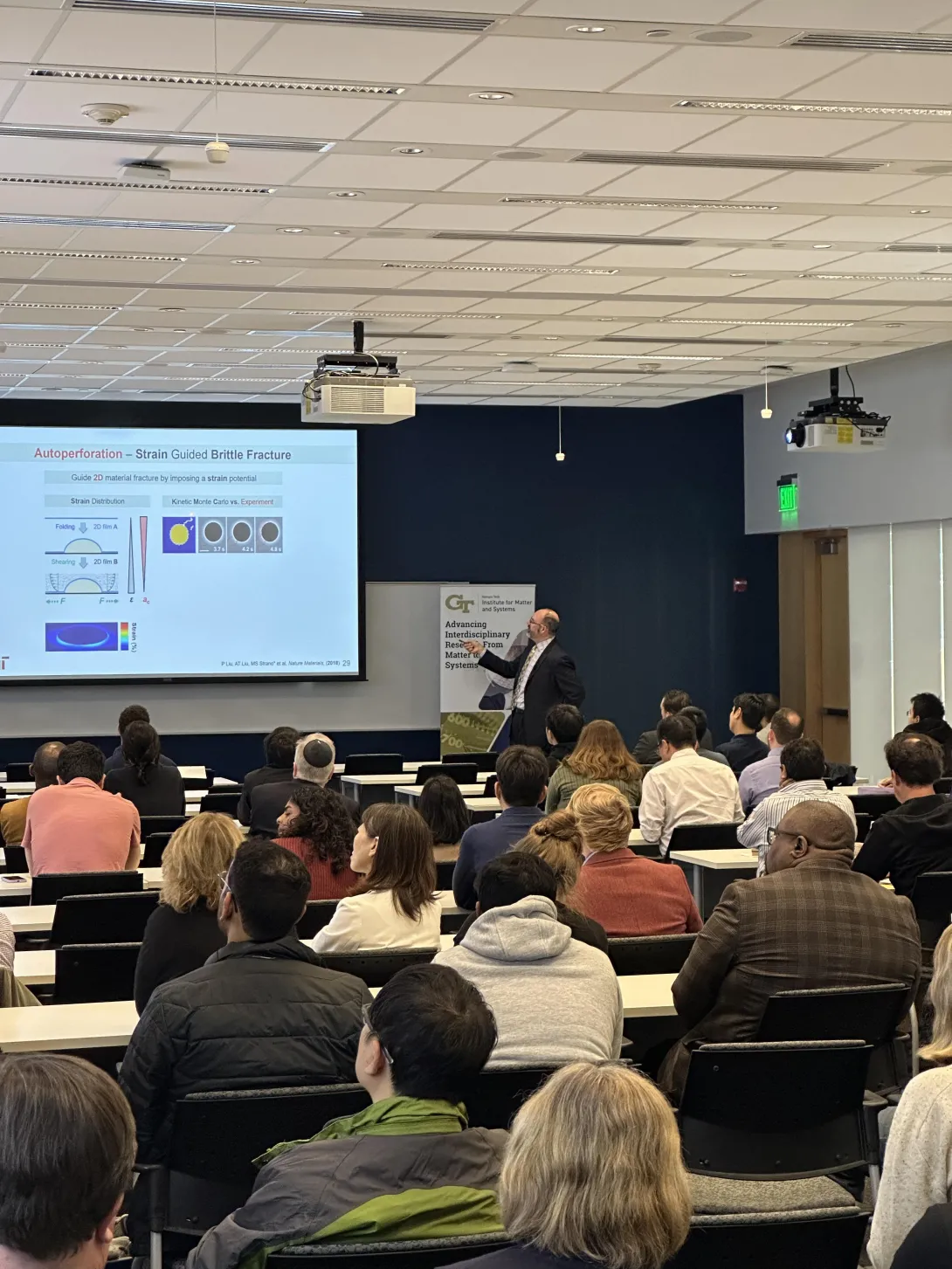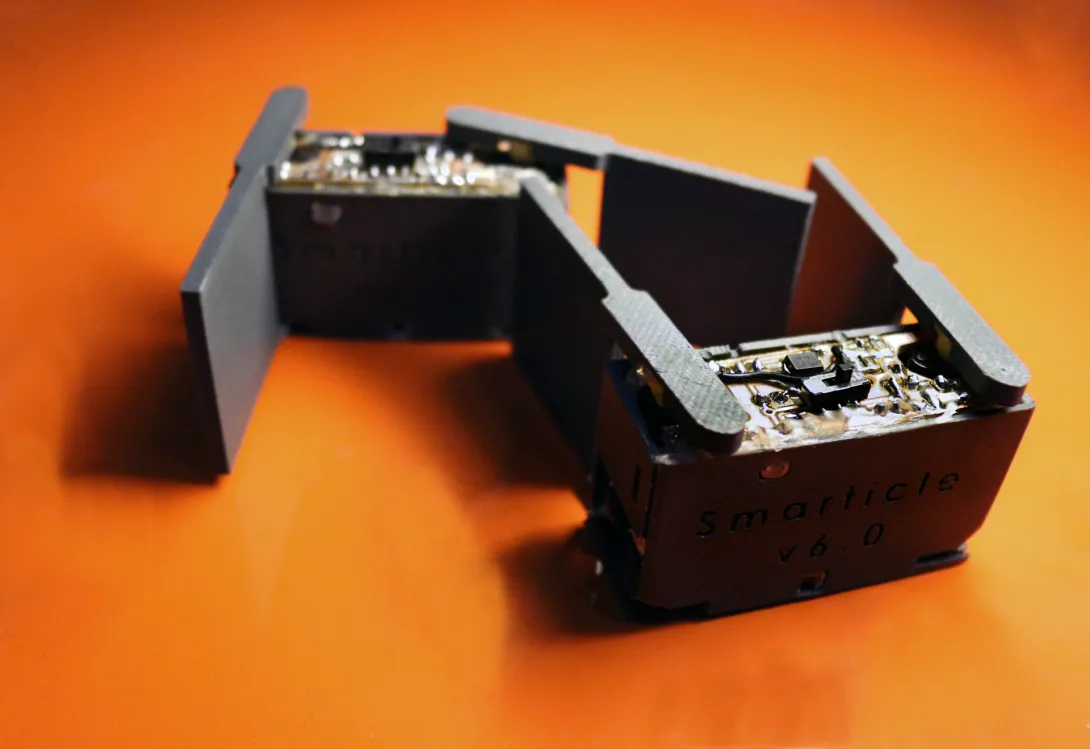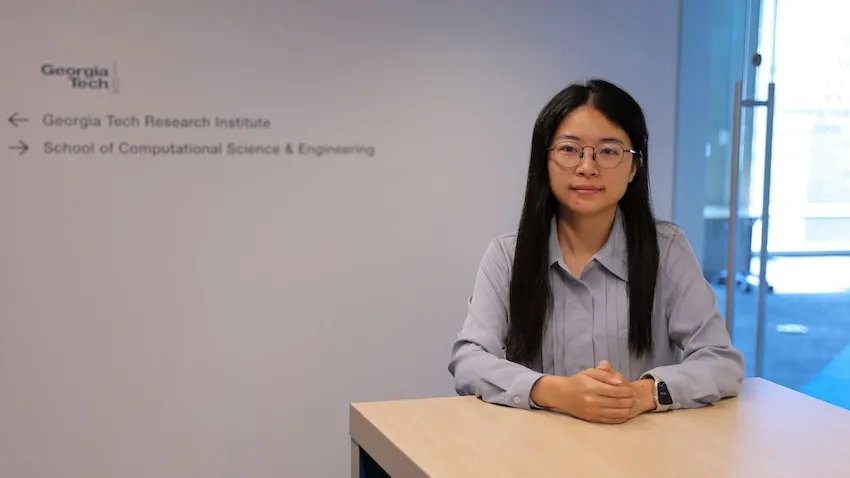Oct. 28, 2024
The Institute for Matter and Systems (IMS) at Georgia Tech has selected seven new interdisciplinary research initiatives to receive seed funding. This funding is part of the larger IMS effort to identify and support visionary leaders driving groundbreaking research and innovation.
IMS focuses on transformational technological and societal systems that arise where innovative materials, devices and processes converge.
“We are excited to support these researchers and their novel ideas,” said Michael Filler, IMS deputy director for Research and Innovation. “Their work exemplifies the spirit of innovation and excellence that IMS and Georgia Tech are known for, and we look forward to seeing the transformative impact of their research.”
The funded initiatives come from four Colleges and 10 Schools across the Institute, and from GTRI. These initiative leads were selected based on their innovative approaches, potential impact, and alignment with IMS’ mission to push the boundaries of science and technology. The winners will receive $10,000, access to state-of-the-art facilities, and other support from IMS to bring their projects to life.
IMS supports interdisciplinary research both in nationally recognized areas of need and those just emerging. It scaffolds research from the ground up, from seed funding for new initiatives to infrastructure support for research programs and embedded support for research centers. These newly announced initiatives are funded at the lowest level of IMS’ three-tiered model. Successful initiatives can receive further funding and/or be elevated to the program level of support.
The 2024 Initiative Leads:
Quantum Engineering | Yan Wang, George W. Woodruff School of Mechanical Engineering and Asif Khan, Electrical and Computer Engineering, College of Engineering.
Matter and Information | Florian Schafer, School of Computational Science and Engineering, College of Computing.
Metamaterials for National Security | Margaret Kosal, Sam Nunn School of International Affairs, Ivan Allen College of Liberal Arts.
Waste Materials Processing | Ebenezer Fanijo, School of Building Construction, College of Design; and David Citrin, School of Electrical and Computer Engineering, College of Engineering.
Microscale Thermal Tech for Sustainability | Noura Howell, School of Literature, Media, and Communication, Ivan Allen College of Liberal Arts and Joe Bozeman, School of Civil and Environmental Engineering, College of Engineering.
Sports Research, Innovation, and Technology | Jud Ready, Georgia Tech Research Institute.
Incentivizing Breakthrough Science | Usha Nair-Reichert, School of Economics and Richard Barke, School of Public Policy, Ivan Allen College of Liberal Arts.
Oct. 25, 2024
Tech AI at Georgia Tech has appointed Tim Brown as interim director of professional education. He is also the new academic program director for AI, a joint appointment by Tech AI and Georgia Tech Professional Education (GTPE). Previously, Brown served as managing director of Georgia Tech’s Supply Chain and Logistics Institute for nearly 10 years, where he focused on program expansion and partnership development.
In his new role, Brown will work closely with the College of Lifetime Learning and Tech AI to develop innovative AI programs. He will identify industry needs and create interdisciplinary academic offerings serving a diverse range of learners, from K-12 students to executives. His initial emphasis will be on mid-career professionals seeking to upskill or reskill, equipping them with the technical skills essential for success in the AI field. He will also enhance existing programs and provide educational opportunities to companies and organizations, addressing current market demands.
Brown has more than 35 years of experience in professional education and supply chain optimization, including roles at IBM, Accenture, Chainalytics, Frito-Lay, and Tropicana. He has worked with executives in various industries, advising on supply chain management and securing $81 million in funding for AI in manufacturing through the Georgia AIM coalition.
In a statement, Brown said, “I look forward to contributing to innovative AI programs at Georgia Tech. Our goal is to create educational opportunities that meet the diverse needs of learners and equip them with the skills necessary to thrive in this evolving field.”
Brown’s leadership underscores Georgia Tech’s commitment to innovation and education in the rapidly changing landscape of AI. He is dedicated to establishing Georgia as a leader in AI and highlighting the resources and capabilities that Georgia Tech offers.
Oct. 24, 2024
The U.S. Department of Energy (DOE) has awarded Georgia Tech researchers a $4.6 million grant to develop improved cybersecurity protection for renewable energy technologies.
Associate Professor Saman Zonouz will lead the project and leverage the latest artificial technology (AI) to create Phorensics. The new tool will anticipate cyberattacks on critical infrastructure and provide analysts with an accurate reading of what vulnerabilities were exploited.
“This grant enables us to tackle one of the crucial challenges facing national security today: our critical infrastructure resilience and post-incident diagnostics to restore normal operations in a timely manner,” said Zonouz.
“Together with our amazing team, we will focus on cyber-physical data recovery and post-mortem forensics analysis after cybersecurity incidents in emerging renewable energy systems.”
As the integration of renewable energy technology into national power grids increases, so does their vulnerability to cyberattacks. These threats put energy infrastructure at risk and pose a significant danger to public safety and economic stability. The AI behind Phorensics will allow analysts and technicians to scale security efforts to keep up with a growing power grid that is becoming more complex.
This effort is part of the Security of Engineering Systems (SES) initiative at Georgia Tech’s School of Cybersecurity and Privacy (SCP). SES has three pillars: research, education, and testbeds, with multiple ongoing large, sponsored efforts.
“We had a successful hiring season for SES last year and will continue filling several open tenure-track faculty positions this upcoming cycle,” said Zonouz.
“With top-notch cybersecurity and engineering schools at Georgia Tech, we have begun the SES journey with a dedicated passion to pursue building real-world solutions to protect our critical infrastructures, national security, and public safety.”
Zonouz is the director of the Cyber-Physical Systems Security Laboratory (CPSec) and is jointly appointed by Georgia Tech’s School of Cybersecurity and Privacy (SCP) and the School of Electrical and Computer Engineering (ECE).
The three Georgia Tech researchers joining him on this project are Brendan Saltaformaggio, associate professor in SCP and ECE; Taesoo Kim, jointly appointed professor in SCP and the School of Computer Science; and Animesh Chhotaray, research scientist in SCP.
Katherine Davis, associate professor at the Texas A&M University Department of Electrical and Computer Engineering, has partnered with the team to develop Phorensics. The team will also collaborate with the NREL National Lab, and industry partners for technology transfer and commercialization initiatives.
The Energy Department defines renewable energy as energy from unlimited, naturally replenished resources, such as the sun, tides, and wind. Renewable energy can be used for electricity generation, space and water heating and cooling, and transportation.
News Contact
John Popham
Communications Officer II
College of Computing | School of Cybersecurity and Privacy
Oct. 22, 2024
The Institute for Matter and Systems (IMS) held its opening showcase on October 15, 2024, in the Marcus Nanotechnology Building at Georgia Tech.
“We're trying to link people from fundamental science through materials, measurements, modelling software, systems, economics, and public policy,” said Eric Vogel, IMS executive director.
Vogel noted that IMS does this in four ways— through research support, fabrication and characterization core facilities, education and outreach programs and strategic external engagement.
The Institute for Matter and Systems arose from the union of the Institute of Electronics and Nanotechnology and the Institute for Materials. Each of the latter two interdisciplinary research institutes focused on major national priorities — the National Nanotechnology Initiative and the Materials Genome Initiative, respectively. The work done by IMS researchers flies at the intersection of technology, innovation, and science, with a focus on creating technological and societal transformation through devices, processes and components.
The event featured the second annual Oliver Brand Memorial Lectureship on Electronics and Nanotechnology. The lecture was presented by Michael Strano, whose research focuses on micro-robotics.
After the lecture, guests were invited to explore IMS’s research centers and facilities. Walking tours of the micro/nano fabrication cleanroom and material characterization facility showcased the core facilities available to those who engage with IMS. Booths featuring IMS supported research centers allowed guests to explore the breadth of research activities happening within the research institute.
Oct. 22, 2024
For his work creating new kinds of drug delivery techniques and bringing those technologies to patients, Mark Prausnitz is one of the new members of the National Academy of Medicine (NAM).
The Academy announced his election Oct. 21 alongside 99 others. Membership in NAM is considered one of the highest recognitions in health and medicine, reserved for those who’ve made major contributions to healthcare, medical sciences, and public health. The roster is small: only 2,400 or so individuals have been honored.
“It’s an honor to be elected to the National Academy of Medicine and have the work of our team at Georgia Tech recognized in this way,” said Prausnitz, Regents’ Professor and J. Erskine Love Jr. Chair in the School of Chemical and Biomolecular Engineering.
The Academy cited Prausnitz for innovating microneedle and other advanced drug delivery technologies. He also was honored for translating those methods and devices into clinical trials and products and founding companies to bring the advances to patients. NAM praised Prausnitz for “inspiring students to be creative and impactful engineers.”
News Contact
Joshua Stewart
College of Engineering
Oct. 22, 2024
Lieuwen and his research group are developing a new type of all-purpose combustor that can use any type of fuel while still maintaining low emission standards. Their non-premixed, rich, relaxation, lean (NRRL) combustor works just as well as current mixed-fuel type combustors — but without instability.
Oct. 22, 2024
It was a full house in Georgia Tech’s Marcus Nanotechnology Building for the Oliver Brand Memorial Lectureship on Electronics and Nanotechnology on October 15, 2024. The lecture was presented by Michael Strano, Carbon C. Dubs professor of chemical engineering at MIT, on nanoelectronics grafted onto and within colloids for colloidal state machines and micro-robots.
“We have gathered today to remember a remarkable individual, Professor Oliver Brand, and his contributions to Georgia Tech and to the field of electronics and nanotechnology,” said Michael Filler, Institute for Matter and Systems deputy director.
“Beyond his academic success, Oliver was a mentor, a colleague, and a friend,” Filler added. “He was known for his sharp mind, his gentle style, and his unwavering support for those around him. His ability to foster collaboration has left an indelible mark on the community, near and far.”
Strano’s talk was the second annual lecture in honor of Brand who served as executive director of the Georgia Tech Institute of Electronics and Nanotechnology (IEN) from 2014 - 2023.
While he never worked directly with Brand, Strano emphasized Brand’s impact in the field of electronics and nanotechnology as well as his impact during the Covid-19 pandemic.
“I can’t say anything better than what Oliver’s colleagues have already said,” said Strano. “They said he was a pioneer and described him as trans-disciplinary and had an enormous impact. Few can match the magnitude of his influence on campus and during the pandemic.”
Strano highlighted the importance of interdisciplinary work, which is necessary to create anything on the nanoscale, with emphasis on his team’s work creating nanoelectronics for micro-robotics. Strano, a chemical engineer, mentioned multiple times that his work — creating nanoscale electronics — would not exist without collaborating with electrical engineers.
Brand, who died in 2023, as a legacy that lives on through interdisciplinary research at Georgia Tech. He spent more than 20 years as a member of the Institute’s faculty. In addition to leading IEN, he was a professor in the School of Electrical and Computer Engineering, director of the Coordinating Office for the NSF-funded National Nanotechnology Coordinated Infrastructure (NNCI), and director of the Southeastern Nanotechnology Infrastructure Corridor, one of the 16 NNCI sites.
Brand united researchers in the fields of electronics and nanotechnology, fostering collaboration and expanding IEN to include more than 200 faculty members. In addition to his respected work in the field of microelectromechanical systems, he is remembered for his kindness, dedication, and unwavering support for all who knew him.
Oct. 21, 2024
If you’ve ever watched a large flock of birds on the wing, moving across the sky like a cloud with various shapes and directional changes appearing from seeming chaos, or the maneuvers of an ant colony forming bridges and rafts to escape floods, you’ve been observing what scientists call self-organization. What may not be as obvious is that self-organization occurs throughout the natural world, including bacterial colonies, protein complexes, and hybrid materials. Understanding and predicting self-organization, especially in systems that are out of equilibrium, like living things, is an enduring goal of statistical physics.
This goal is the motivation behind a recently introduced principle of physics called rattling, which posits that systems with sufficiently “messy” dynamics organize into what researchers refer to as low rattling states. Although the principle has proved accurate for systems of robot swarms, it has been too vague to be more broadly tested, and it has been unclear exactly why it works and to what other systems it should apply.
Dana Randall, a professor in the School of Computer Science, and Jacob Calvert, a postdoctoral fellow at the Institute for Data Engineering and Science, have formulated a theory of rattling that answers these fundamental questions. Their paper, “A Local-Global Principle for Nonequilibrium Steady States,” published last week in Proceedings of the National Academy of Sciences, characterizes how rattling is related to the amount of time that a system spends in a state. Their theory further identifies the classes of systems for which rattling explains self-organization.
When we first heard about rattling from physicists, it was very hard to believe it could be true. Our work grew out of a desire to understand it ourselves. We found that the idea at its core is surprisingly simple and holds even more broadly than the physicists guessed.
Dana Randall Professor, School of Computer Science & Adjunct Professor, School of Mathematics
Georgia Institute of Technology
Beyond its basic scientific importance, the work can be put to immediate use to analyze models of phenomena across scientific domains. Additionally, experimentalists seeking organization within a nonequilibrium system may be able to induce low rattling states to achieve their desired goal. The duo thinks the work will be valuable in designing microparticles, robotic swarms, and new materials. It may also provide new ways to analyze and predict collective behaviors in biological systems at the micro and nanoscale.
The preceding material is based on work supported by the Army Research Office under award ARO MURI Award W911NF-19-1-0233 and by the National Science Foundation under grant CCF-2106687. Any opinions, findings, and conclusions or recommendations expressed in this material are those of the authors and do not necessarily reflect the views of the sponsoring agencies.
Jacob Calvert and Dana Randall. A local-global principle for nonequilibrium steady states. Proceedings of the National Academy of Sciences, 121(42):e2411731121, 2024.
Oct. 21, 2024
Alex Hamrick is the Vice President of Supply Chain Analytics, Channel Optimization, and PMO at The Home Depot. Alex and his team are responsible for end-to-end analytics, data science, data architecture, and project management functions for The Home Depot supply chain. This includes optimizing product flow path selection, product stocking location optimization, forecasting and capacity planning in the distribution centers, network optimization, cost and service optimization in our transportation and delivery operations, and SKU productivity in the supply chain network. Alex’s teams apply traditional analytical methods and are actively developing machine learning and AI use cases across the supply chain.
Over the last twelve years at The Home Depot, Alex has held roles of increasing responsibility in both operational and analytical functions in both The Home Depot's online and store businesses. Prior to joining The Home Depot, Alex worked for CHEP in a variety of supply chain roles including network optimization, demand forecasting, and inventory.
Alex holds a Master’s degree in Economics from the University of Virginia and Bachelor’s degrees in Applied Mathematics, Statistics, and Economics from the University of Central Florida. He grew up in Tampa, Florida and currently resides in Atlanta, Georgia with his wife and two daughters.
SCL appreciates Alex's participation and will leverage his expertise in supply chain analytics, data science, and project management to help shape our strategic initiatives into 2025.
Oct. 17, 2024
Two new assistant professors joined the School of Computational Science and Engineering (CSE) faculty this fall. Lu Mi comes to Georgia Tech from the Allen Institute for Brain Science in Seattle, where she was a Shanahan Foundation Fellow.
We sat down with Mi to learn more about her background and to introduce her to the Georgia Tech and College of Computing communities.
Faculty: Lu Mi, assistant professor, School of CSE
Research Interests: Computational Neuroscience, Machine Learning
Education: Ph.D. in Computer Science from the Massachusetts Institute of Technology; B.S. in Measurement, Control, and Instruments from Tsinghua University
Hometown: Sichuan, China (home of the giant pandas)
How have your first few months at Georgia Tech gone so far?
I’ve really enjoyed my time at Georgia Tech. Developing a new course has been both challenging and rewarding. I’ve learned a lot from the process and conversations with students. My colleagues have been incredibly welcoming, and I’ve had the opportunity to work with some very smart and motivated students here at Georgia Tech.
You hit the ground running this year by teaching your CSE 8803 course on brain-inspired machine intelligence. What important concepts do you teach in this class?
This course focuses on comparing biological neural networks with artificial neural networks. We explore questions like: How does the brain encode information, perform computations, and learn? What can neuroscience and artificial intelligence (AI) learn from each other? Key topics include spiking neural networks, neural coding, and biologically plausible learning rules. By the end of the course, I expect students to have a solid understanding of neural algorithms and the emerging NeuroAI field.
When and how did you become interested in computational neuroscience in the first place?
I’ve been fascinated by how the brain works since I was young. My formal engagement with the field began during my Ph.D. research, where we developed algorithms to help neuroscientists map large-scale synaptic wiring diagrams in the brain. Since then, I’ve had the opportunity to collaborate with researchers at institutions like Harvard, the Janelia Research Campus, the Allen Institute for Brain Science, and the University of Washington on various exciting projects in this field.
What about your experience and research are you currently most proud of?
I’m particularly proud of the framework we developed to integrate black-box machine learning models with biologically realistic mechanistic models. We use advanced deep-learning techniques to infer unobserved information and combine this with prior knowledge from mechanistic models. This allows us to test hypotheses by applying different model variants. I believe this framework holds great potential to address a wide range of scientific questions, leveraging the power of AI.
What about Georgia Tech convinced you to accept a faculty position?
Georgia Tech CSE felt like a perfect fit for my background and research interests, particularly within the AI4Science initiative and the development of computational tools for biology and neuroscience. My work overlaps with several colleagues here, and I’m excited to collaborate with them. Georgia Tech also has a vibrant and impactful Neuro Next Initiative community, which is another great attraction.
What are your hobbies and interests when not researching and teaching?
I enjoy photography and love spending time with my two corgi dogs, especially taking them for walks.
What have you enjoyed most so far about living in Atlanta?
I’ve really appreciated the peaceful, green environment with so many trees. I’m also looking forward to exploring more outdoor activities, like fishing and golfing.
News Contact
Bryant Wine, Communications Officer
bryant.wine@cc.gatech.edu
